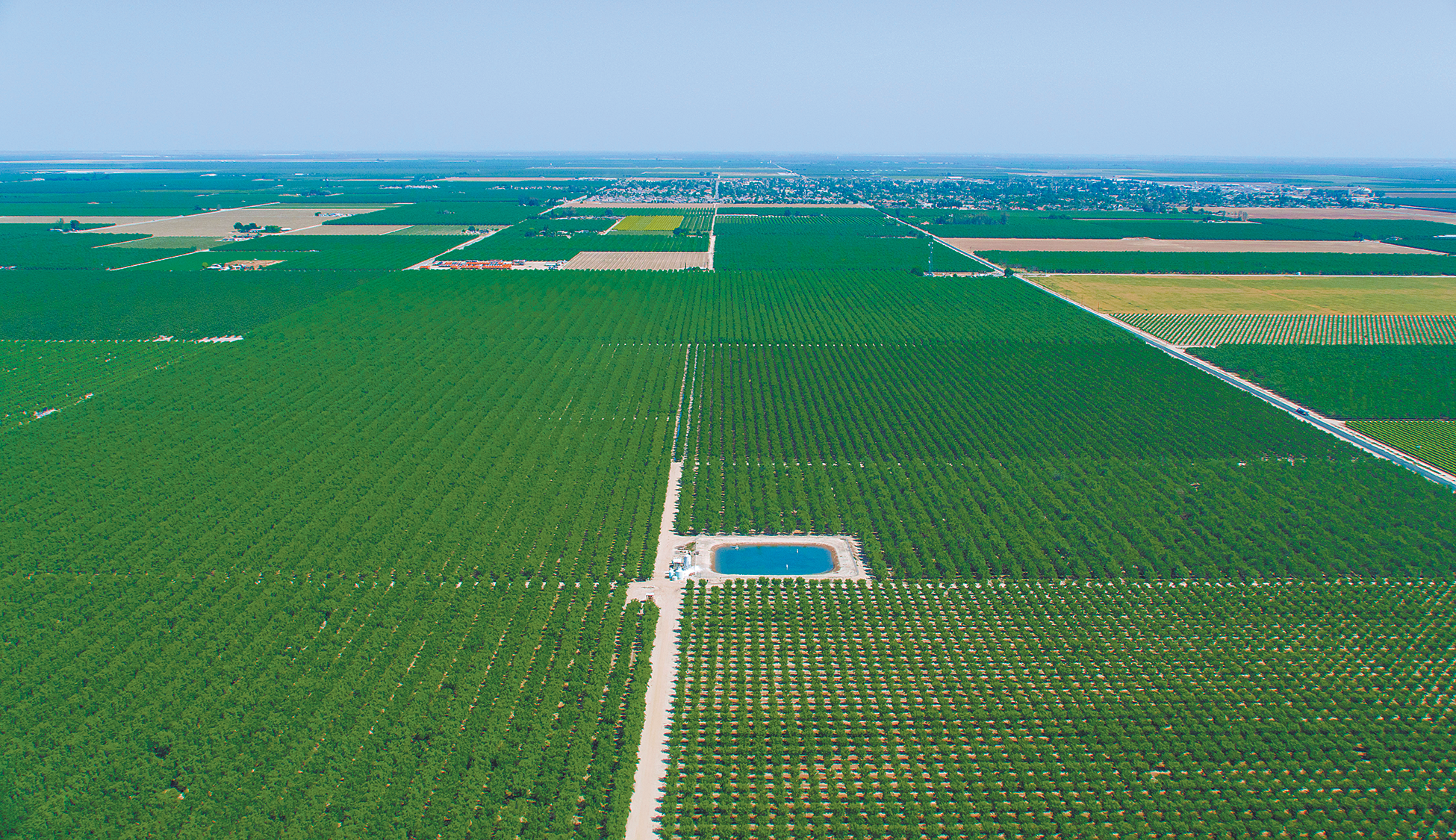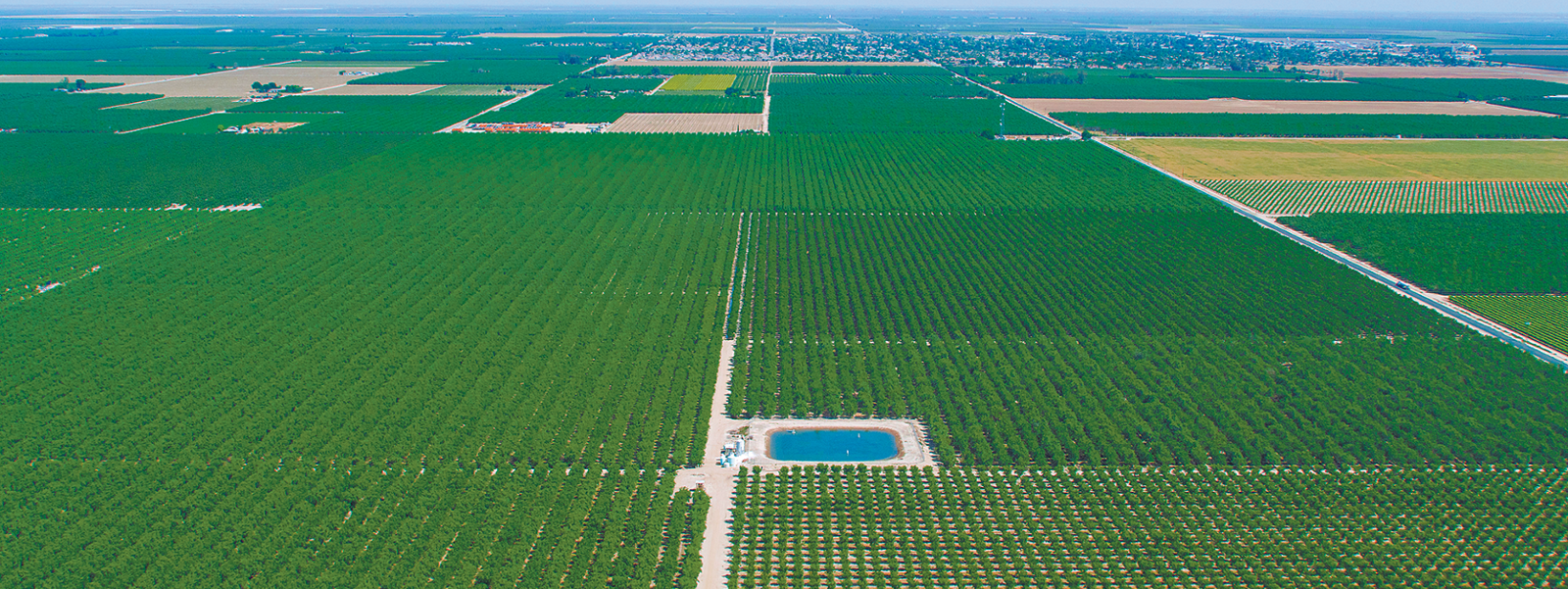Number of farms continues to drop in state and nation

The number of farms in California dropped by 10% from 2017 to 2022, according to the 2022 Census of Agriculture. The federal government conducts the survey every five years.
Photo/California Department of Water Resources

By Caleb Hampton
Small-scale farmers continue to struggle to stay in business in California and across the country, according to the results of the 2022 Census of Agriculture, which was released earlier this month by the U.S. Department of Agriculture.
In California, the overall number of farms decreased 10% from 2017 to 2022, while the average acreage per farm increased 10%. The USDA conducts the census every five years.
The disappearance of small farms reflected in the most recent census continued a decades-long trend. Within the past 30 years, the number of farms in California peaked at 87,991 in 1997. Since 2007, the number of California farms has declined in each census, falling to 63,134 in 2022.
“The number of people engaged in agriculture is a sign of the health of our food system and our society,” said Evan Wiig, director of membership and communications for the Community Alliance with Family Farmers. “To see the continued loss of so many farms is devastating.”
At the national level, the number of farms in all size categories of less than $1 million in yearly sales dropped, with the smallest farms seeing the steepest decline. Farms with more than $1 million in sales per year were the only segment that increased in number. This segment represented around 6% of all U.S. farms and more than 75% of agricultural sales.
“It’s clear that the systems we have—from government programs to the markets to perhaps even the regulations—are not conducive to encouraging the success of small farms,” Wiig said.
For California farmers, the years leading up to the 2022 census brought challenges, including drought, the phase-in of new overtime rules for agricultural workers, labor shortages, wildfires and related property insurance impacts, supply chain issues and port congestion.
From 2017 to 2022, input costs increased sharply. In California, total farm production expenses totaled $49.3 billion, up $11.5 billion from 2017. The largest expense—farm labor—rose from $7 billion to $9.6 billion, with some farmers reporting difficulties finding enough workers.
“Agriculture generally is a challenging profession,” said Chris Reardon, director of governmental affairs for the California Farm Bureau. “Our smaller guys are having a hard time, and they have for a while now.”
He said the economies of scale that many farms rely on to make a profit amid tightening margins remain a serious obstacle for small family farms. Another challenge is the administrative burden associated with applying for government programs and subsidies and ensuring compliance with regulations.
“If you’re not a large operation, who is going to track and do all this stuff for you?” Reardon said.
Meanwhile, the average age of the California farmer increased from 59.2 in 2017 to 59.9 in 2022, the census revealed, indicating continued barriers to entering the agricultural field as a first-time producer.
“The No. 1 barrier for new farmers is simply the cost of land,” Wiig said. “The cost of farmland has skyrocketed.”
From 2017 to 2022, the average estimated market value of California farmland increased from $9,353 per acre to $13,131.
Without inheriting land, Reardon said, “it’s almost impossible,” to start farming from scratch. “The sheer cost of becoming a small nut farmer, for example, between fertilizers, equipment and paying for the property, is not cheap,” he said.
Wiig added, “When you think about a new farmer starting out, the jump from single farmer sole proprietorship doing all the work themselves to hiring just a single employee is massive.”
Despite facing challenges, California farmers in 2022 sold $59 billion worth of agricultural products, up $13.8 billion from 2017. They did so while using more renewable energy than farmers in any other state, with a total 16,699 farms in California using a renewable energy-producing system, most commonly solar.
Crops made up $43 billion in sales, while livestock, poultry and their products made up $16.2 billion. Within those categories, California farmers sold $11.7 billion worth of vegetables, $19.2 billion worth of fruits and tree nuts, $9.7 billion worth of cow milk, $3.7 billion worth of cattle and calves, and $2.1 billion worth of poultry and eggs, showing an increase in sales value across all categories since 2017.
“The economic strength of California agriculture is a testament to the resilience of the state’s farmers and the value of the food and fiber they produce,” California Farm Bureau President Shannon Douglass said. “Despite rising input costs and other challenges, California farms remained the backbone of rural communities, providing jobs and fueling local economies across the state.”
Fresno County was the top ranking county in the state—and the country—in agricultural sales. It was followed by Tulare, Monterey, Kern, Merced, Imperial, San Joaquin, Stanislaus, Santa Barbara and Kings counties.
“California agriculture is a wonder of the world,” Reardon said, noting the estimated 400 commodities produced in the state.
But the obstacles that lie ahead could be even more challenging than those faced in recent years, he warned. “What’s coming in front of us is what concerns me and I think concerns our members and other people in agriculture,” he said.
Among the challenges are new trucking rules related to the transition to zero-emission vehicles, labor shortages, water issues and potential legislation on water rights, and pesticide regulations limiting crop protection materials available to farmers.
“We’re still a prominent player,” Reardon said, referring to California’s agriculture sector, “but I worry long term because of the future challenges.”
(Caleb Hampton is an assistant editor of Ag Alert. He may be contacted at champton@cfbf.com.)




